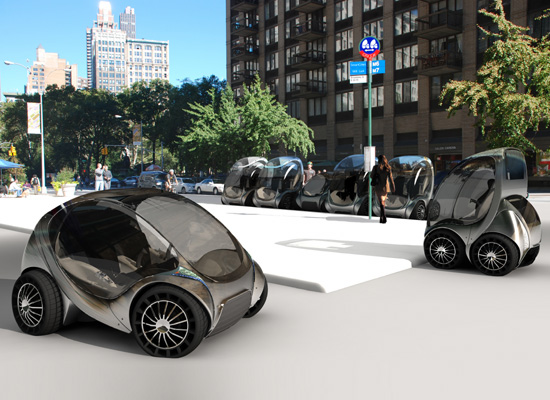
citycar
image © william lark, Jr., MIT media lab, smart cities group
under the direction of william j. mitchell, MIT media laboratory presented 'sustainable urban
mobility through light electric vehicles' at the icsid world design congress during singapore
design week 09. introduced at the congress are the greenwheel electric bicycle, the roboscooter
electric scooter, and the citycar electric automobile - all of which have been developed and
prototyped in the MIT media lab's smart cities group.
'...we can and should create systems that provide very high levels of mobility service while minimizing
energy consumption and supporting a large-scale shift to clean, renewable, more local energy sources.
lightweight, smart battery-electric vehicles are one obvious and essential part of such systems. recharging
infrastructure is a second part. the integration of electric vehicles and their recharging infrastructure with
smart electric grids – to enhance the efficiency of grids and to make them friendlier to clean, renewable,
but intermittent energy sources – constitutes a third part. the organization of electric vehicles into highly
efficient mobility-on-demand systems is a fourth part. finally, a powerful computational back-end – one
that senses and meters the current state of the system, processes large amounts of information in real time,
computes optimum responses to evolving demands and conditions, and controls overall system operation
– is necessary for effective operation of these systems.
integrating (1) smart battery-electric vehicles, (2) recharging infrastructure, (3) smart electric grids,
and (4) mobility-on-demand through (5) urban-scale electronic nervous systems provides the foundation
for creating smart sustainable cities. these cities achieve high levels of operational efficiency – and, in
particular, energy efficiency and carbon minimization.' - william j. mitchell
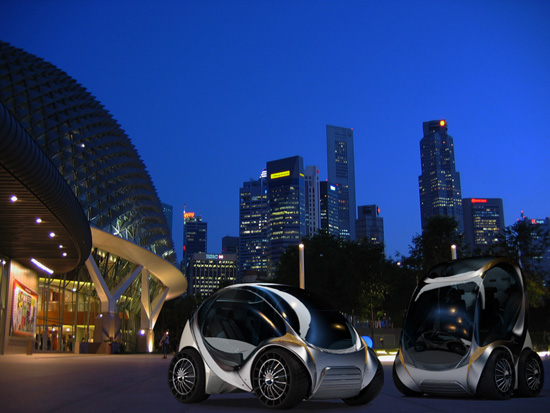
image ©william lark, Jr., MIT media lab, smart cities group
the citycar electric automobile, developed and prototyped by smart cities, weighs less than
a thousand pounds, parks in much less space than a smart car, and is expected to get
the equivalent of 150 to 200 miles per gallon of gasoline. since it is battery-electric,
it produces no tailpipe emissions.
the car does not have a central engine and traditional power train, but is powered by four
in-wheel electric motors. each wheel unit contains drive motor (which also enables regenerative
braking), steering, and suspension, and is independently digitally controlled. this enables maneuvers
like spinning on its own axis (an o-turn instead of a u-turn), moving sideways into parallel parking
spaces, and lane changes while facing straight ahead.
shifting drive to the corners in this way enables the citycar to fold to minimize parking footprint,
and to provide front ingress and egress (since there is no engine in the way). this dramatically
changes its relationship to streets and cities. it can park nose-in to the curb in far less than the width
of a traditional parking bay, and it can park at very high densities. it is possible to park three or
four citycars in the length of a traditional parking bay.
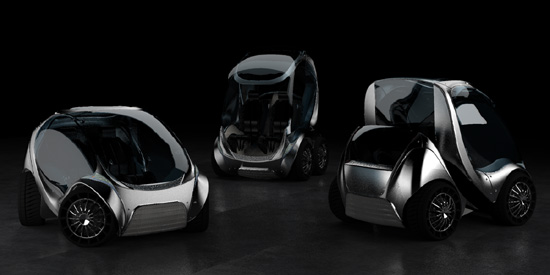
image © william lark, Jr., MIT media lab, smart cities group

image © MIT media lab, smart cities group
© 2007 MIT
the roboscooter folding electric scooter, developed by the smart cities group features in-wheel electric
motors, lithium-ion batteries, and a cast aluminum frame. to minimize parking footprint – which is
a key consideration in many contexts where scooters are popular – it folds up into a very compact
configuration. for contexts where this is not necessary, the roboscooter can also be produced in
non-folding models.
roboscooters are designed to serve as approximate functional equivalents of 50cc gasoline-powered
scooters. they are, however, clean, silent, and occupy less parking space. they are also much simpler
– consisting of about 150 parts, compared to the 1,000 to 1,500 of an equivalent gasoline-powered
scooter – which simplifies supply chains and assembly processes, reduces vehicle costs,
and simplifies maintenance.
they can be recharged in their racks. their battery packs are also small enough to be conveniently
removable, which opens up the possibilities of charging spare batteries at home, and of battery
vending machines that accept discharged batteries and provide fully charged ones.
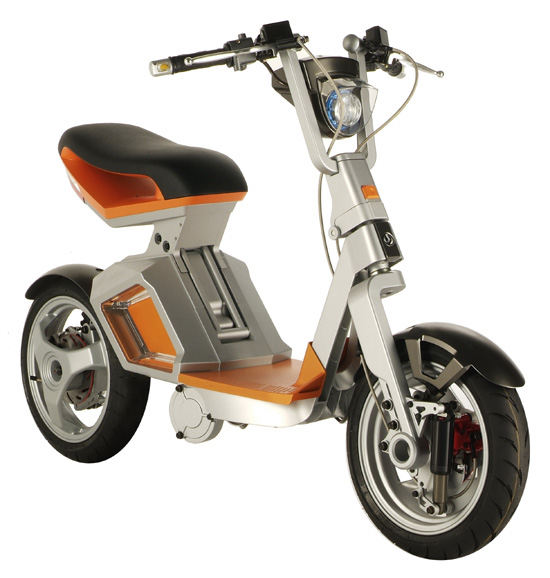
roboscooter
image © michael chia-liang lin, MIT media lab, smart cities group
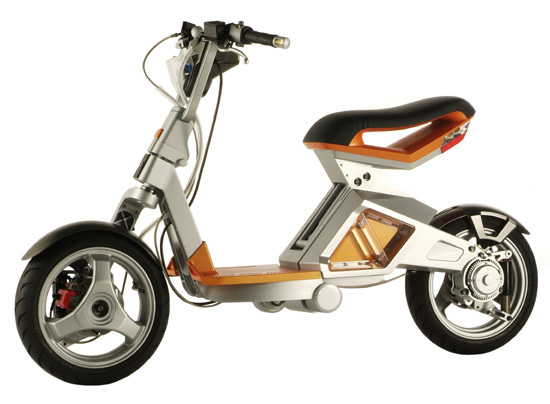
roboscooter folding sequence 01
image © michael chia-liang lin, MIT media lab, smart cities group
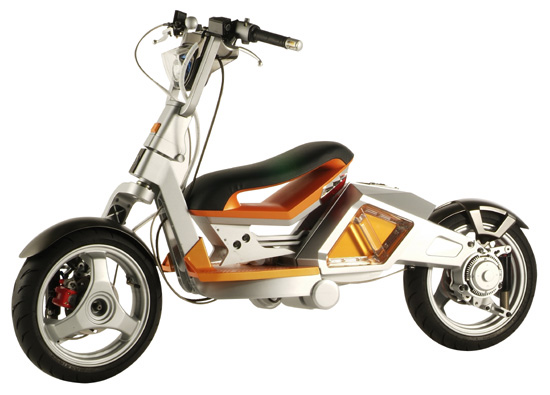
roboscooter folding sequence 02
image © michael chia-liang lin, MIT media lab, smart cities group
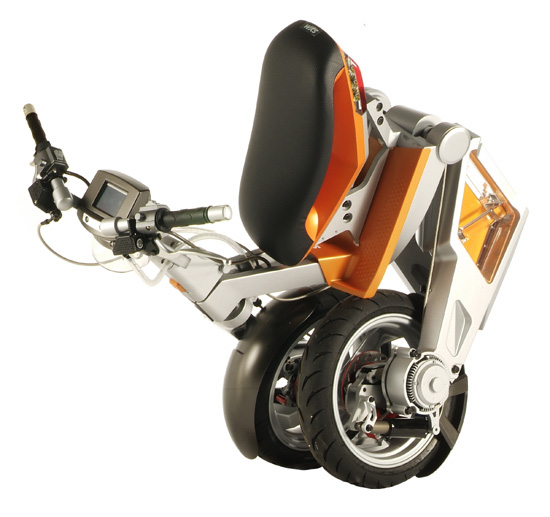
roboscooter folding sequence 03
image © michael chia-liang lin, MIT media lab, smart cities group
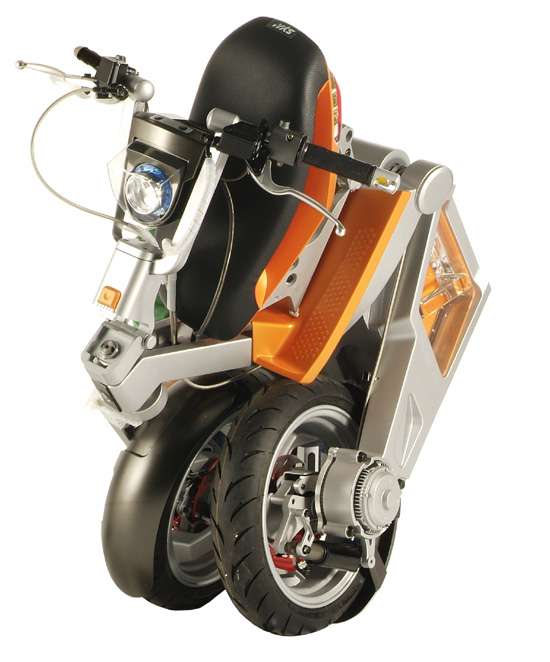
roboscooter folding sequence 04
image © michael chia-liang lin, MIT media lab, smart cities group
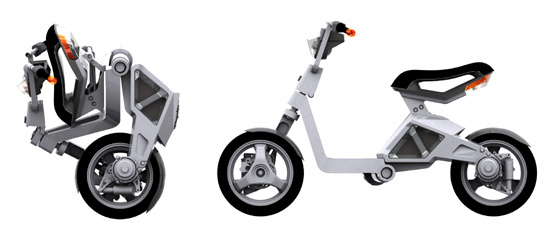
image © michael chia-liang lin, MIT media lab, smart cities group
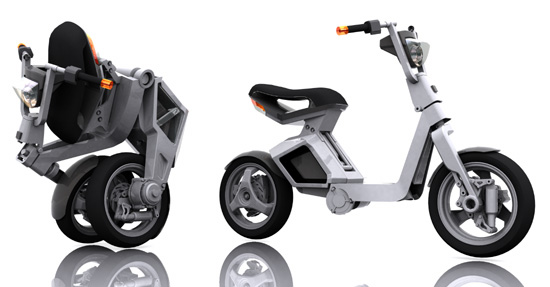
image © michael chia-liang lin, MIT media lab, smart cities group
© 2008 MIT
the greenwheel, developed by the MIT media laboratory’s smart cities group is a compact,
modular hub unit that provides electric assist and regenerative braking, and also contains
lithium-ion batteries. its gearing is arranged to minimize spinning mass, so that it does not
affect the ride dynamics.
greenwheels are mechanically and electrically self-contained, and can be fitted to any
standard bicycle. they do not require bicycle redesign, the purchase and installation of
complex kits, or purchase of entire new bicycles. you just remove the back wheel of
your bike and replace it with a greenwheel.
the electric motor of a greenwheel is digitally controlled, which enables precise management
of the torque. this is usually provided from a wireless controller on the handlebars (much like
a motorcycle throttle), which allows the rider to control the motor with one hand, and eliminates
the need for a wire running to the hub. where local regulations require it, a wire can of course
be added. it is also possible to provide control from the pedals.

image © MIT media lab, smart cities group

image © MIT media lab, smart cities group
No comments:
Post a Comment